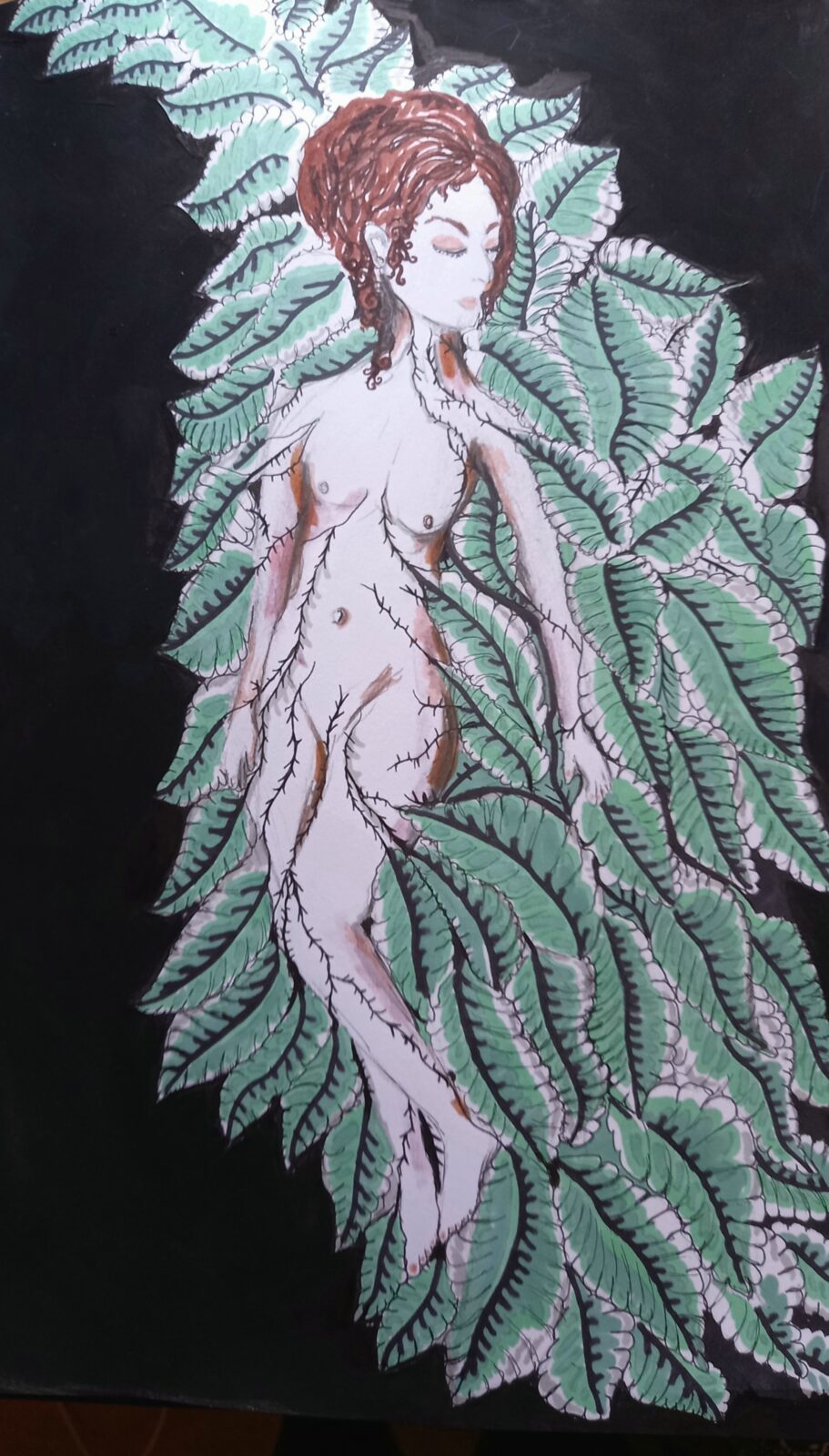Painting & Poetry: April
Our new creatives, Molly Lambourn and Jade Cuttle, share the first works of their residency. Inspired by the vibrant green 'Chawton Leaf' wallpaper in the Dining Room, both have created new works that explore the strange realities of a leaf-lined room. Jade's poem draws out both sinister and idyllic resonances, whilst Molly's artwork explores the intimacy of historical artefacts and ideas of romance, sexuality and scandal...Chawton Leaf
After the leaf wallpaper in Jane Austen’s Dining Parlour
I’ve been chewing over the stalk of spring,
thinking about how the blossom can be so brief:
each branch is stripped back to spindle and bone
as swiftly as tea poured out from a porcelain cup.
The well, meanwhile, festers like an open wound,
a clotted jam of petals no woman can ever touch.
This leaf-choked house is a hotline to the wasps,
direct and yet, I would gladly hold for hours.
Listen to Jade reading her poem:
Jade: This poem is inspired by the leaf wallpaper in Jane Austen’s Dining Parlour, and explores the external realities of having spring foliage inside a house. If a house were really covered in leaves, it would be a hotbed for wasps (“a direct hotline” in my modern mind — but one that offers pleasure in “staying on hold for hours”, since Austen finally felt at home in this natural setting, following her unsatisfactory stay in Bath).
I began by reading Grant Montgomery’s description of the leaf wallpaper behind the writing desk where Jane Austen wrote or reworked her six novels, and the highly poisonous arsenic ingredient used to create the popular early 19th-century colour. “This vibrant design leaps out from the walls of the Dining Parlour in all its arsenic green glory. The dense leaf motif repeat pattern surrounds and insulates you like that of a hedge — or a maze.”
The description juxtaposes the feeling of comfort through the “insulating” allusion to a hedge, with the feeling of disorientation through the menacing comparison to a “maze”. Even the adjective “arsenic” courts danger for its associations with fire, along with “leaps” for its abrupt violence. Likewise, while having the interior walls of a house smothered in leaves might sound idyllic, the practicalities would likely be less so, which transpires in the sinister allusions behind the neat form and its “porcelain” surface perfection. Finally, the brevity of this poem represents the brevity of blossom, while pursuing domestic crossovers such as “stripping” (wallpaper/trees) and “chewing” (stalks/musing).
Jane in Chawton Leaf
Molly: I am interested in the wallpaper as this living body, this immersive and claustrophobic paper that knew Jane better than herself. It knew her every word, it watched her write. The time she spent in that room was time away from the propriety of society, her time to indulge and imagine realities far from her own.
Indeed, the room was her ‘room of one’s own’, I am interested that these historical artefacts (while some a recreation) would have had more understanding and closeness to Jane than we can ever accomplish.
The wallpaper clings to Jane, holds her. The room is addictive, secretive and hers to fully explore ideas of romance, sexuality and scandal without worry for who might see.

